 |
 |
 |
| |
HCV Treatment Less Likely for Women, Current Drug Users, Detectable HIV Load
|
| |
| |
IDWeek 2020, October 22-25, 2020
Mark Mascolini
In an urban US clinic integrating care of HCV and HIV infection, HCV/HIV-coinfected women, current drug users, and people with a detectable HIV load had more than doubled odds of not starting drug therapy for HCV [1].
Rutgers Infectious Diseases Practice integrates care of HCV and HIV in Newark, New Jersey, with a focus on addressing social barriers to care. This analysis aimed to pinpoint factors predicting lower HCV treatment rates in HCV/HIV-coinfected people. A retrospective chart review focused on 317 HCV/HIV-coinfected people who had at least one clinic visit between January 2017 and July 2018. Factors significantly (P < 0.05) associated with lack of HCV treatment in univariate analysis, plus age and race, entered a multivariate logistic regression model.
The 317 study participants averaged 57.3 years in age, 42% were women, 79% black, 10% Hispanic, and 6% white. The group averaged 13 years since HIV diagnosis, their HIV viral load averaged 7211 copies, and their CD4 count 567. APRI score averaged 0.84 [2].
During the study period, 206 people (65%) received medications for HCV infection and 111 (35%) did not. A significantly higher proportion of men than women got treated (66% vs 34%, P < 0.001). Blacks made up nearly identical proportions of treated and not-treated people (79%), while a slightly higher proportion of treated than untreated people were Hispanic (12.1% vs 7.2%), and a slightly higher proportion of treated than untreated people were white (6.3% treated vs 4.5% not treated) (P = 0.034).
Compared with the treated group, the untreated group had a shorter time since HIV diagnosis (11.2 vs 13 years, P = 0.021), a higher HIV load (17,945 vs 1428 copies, P < 0.001), and a lower CD4 count (447 vs 631, P < 0.001). Average APRI [2] proved significantly higher (worse) in people not treated for HCV than in the treated group (1.6 vs 0.43, P = 0.005).
Among current drug users, a higher proportion did not receive HCV therapy than did (57.7% vs 29.6%, P < 0.001). The same proved true for past drug users, though the difference between untreated and treated proportions was smaller (89.2% vs 74.3%, P = 0.002).
Multivariable logistic regression sorted out five independent predictors of not receiving HCV therapy at the following adjusted odds ratios (aOR):
-- Women vs men: aOR 2.93, P < 0.001
-- Higher APRI: aOR 2.39, P = 0.001
-- Current drug use: aOR 2.43, P = 0.004
-- HIV load at or above 40 copies: aOR 2.11, P = 0.021
-- More years since HIV diagnosis: aOR 0.957, P = 0.021
Despite the integrated HCV/HIV care in their clinic, the researchers advised "concerted efforts" to extend HCV therapy to people at risk for remaining untreated. They proposed that "provider perceptions" may limit HCV medication prescription for current drug users and those with a high viral load, because providers may perceive those groups as less likely to maintain good adherence to anti-HCV therapy. But "the rationale for why women were less likely to be treated is less clear." The authors suggested factors not captured by this analysis, such as trauma, may explain lower HCV treatment rates in women.
References
1. Correia LA, Tseng CS, Portilla M, Swaminathan S. Barriers to hepatitis C elimination in an urban clinic offering integrated HIV/HCV treatment. IDWeek 2020, October 22-25, 2020. Abstract 928.
2. A higher APRI (AST-to-platelet ratio) predicts fibrosis and cirrhosis. University of Washington. Hepatitis C online. AST to platelet ratio index (APRI) calculator. https://www.hepatitisc.uw.edu/page/clinical-calculators/apri
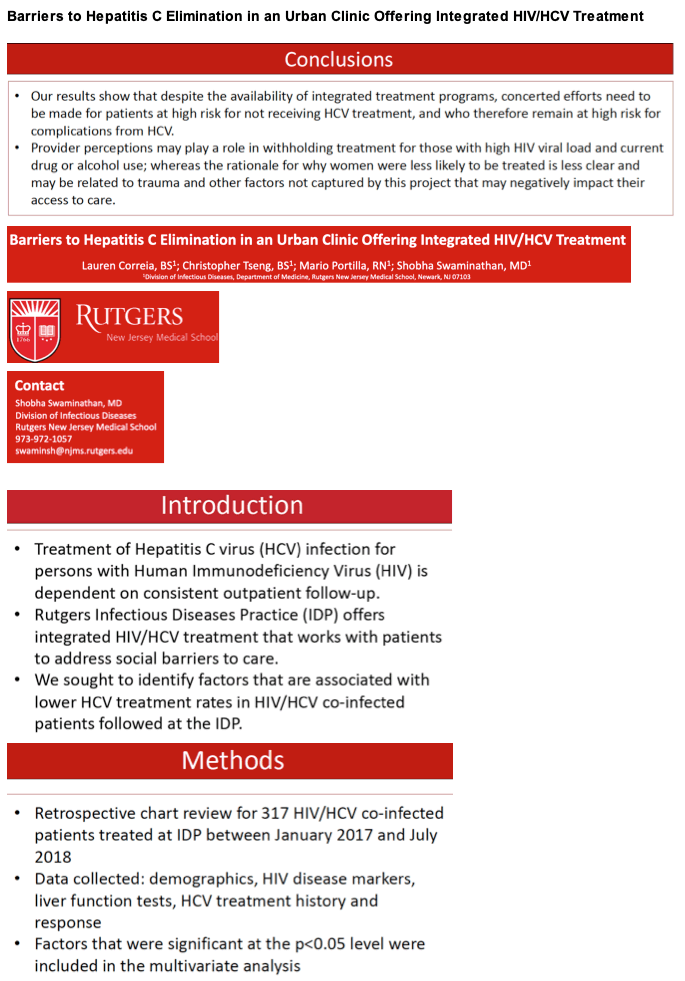
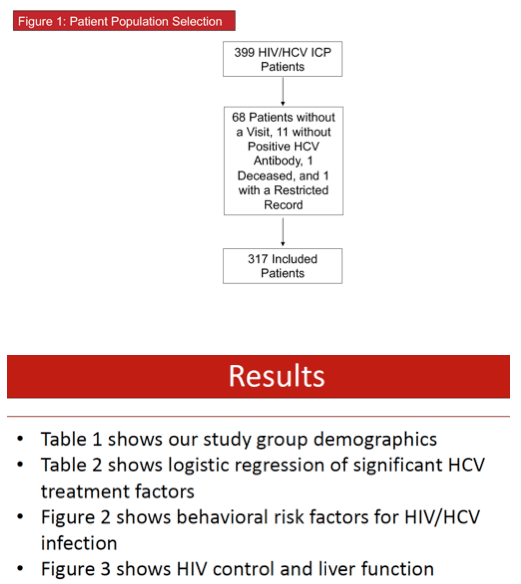
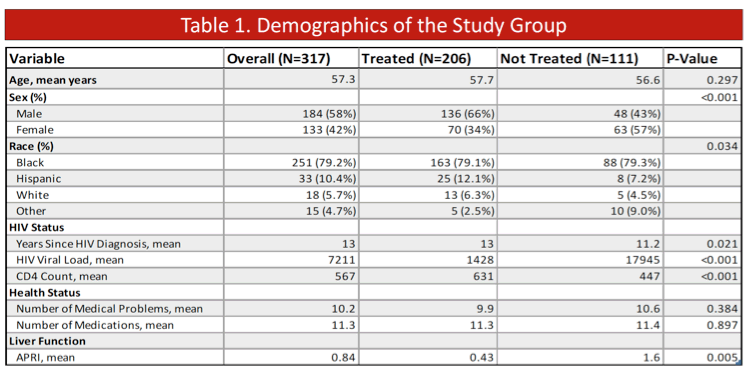
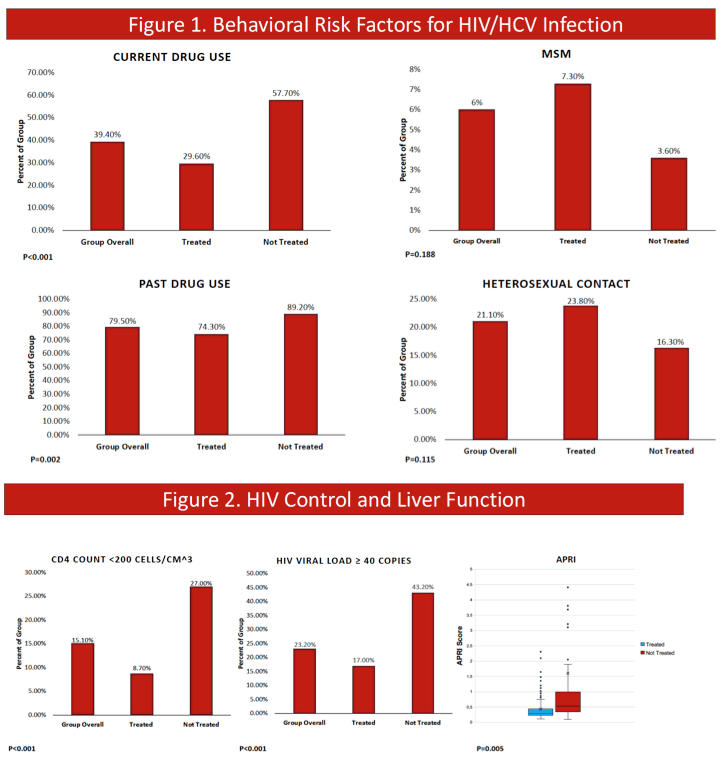
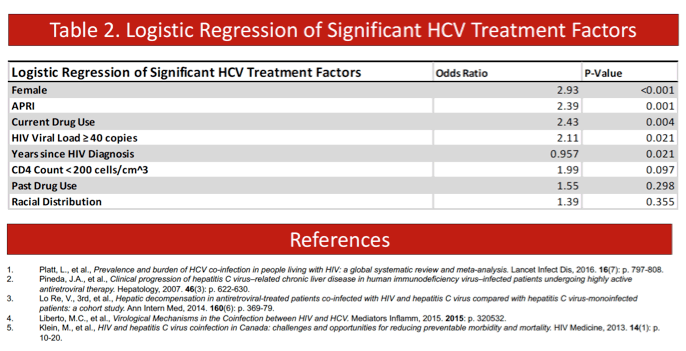
|
| |
|
 |
 |
|
|